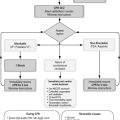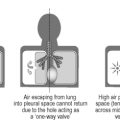Chapter 48. Aeromedical evacuation
Medical aviation is now extremely sophisticated and can be conveniently divided into primary casualty evacuation and secondary patient transfer. The expertise and equipment required for each are different.
Primary casualty evacuation is the transport of a patient from the site of injury to a receiving hospital
This requires a medical crew which is expert in resuscitation, familiar with prehospital hazards and practised in cooperation with other emergency services. Equipment must be robust and specific for urgent interventions which may be required. The level of medical expertise determines the range and type of possible medical intervention. This, in turn, determines the nature of the medical equipment carried and varies greatly between systems. The flexibility of a helicopter system makes it ideal for the primary role, allowing the medical team to take the best possible medical care to the patient’s side. The helicopter can be reconfigured to take account of the specific requirements of its role.
Secondary patient transfer is the movement of a patient between hospitals
This requires a medical crew expert in the use of intensive care equipment, monitoring and drugs. Often, transfers occur over long distances and it is usually quicker and more cost-effective to use fixed wing aircraft rather than helicopters for this purpose. This is a specialised subject suited to the intensive care physician and is not normally the province of the paramedic.
Primary casualty evacuation
Helicopter systems vary widely. Their emphasis may be on patient transport or on medical care or a combination of the two.
Transport
The emphasis is on moving the patient from one location to another. Usually the casualty requires transfer from an incident scene that is remote by virtue of distance or terrain. There may be little medical expertise available (or required by the patient) and the system is cost-effective because it obviates the use of long and difficult land transport.
Treatment
A helicopter can bring together a rare clinical event and the required care provider, e.g. a severe head injury and a neurosurgical unit combining high-quality prehospital care with advanced medical skills, delivered by experienced doctors and paramedics.
Triage
Medical services have seldom been planned logically according to the needs of the resident population. Specialist units may have arisen as a result of historical accident or the enthusiasm of individuals. Aeromedical evacuation may offer the opportunity of ensuring the transfer of a patient to the most appropriate clinical receiving facility.
The medical crew
The crew required depends on the aims and use of the system.
• A team that includes an experienced doctor and paramedic will generally provide all the skills required
• The paramedics contribute their experience in the prehospital environment, familiarity with other emergency services and their procedures and experience in providing medical treatment outside hospital
• The inclusion of an appropriately trained doctor contributes advanced assessment skills and allows critical interventions that may be instantly required to treat the patient, including advanced anaesthetic and surgical skills.
The Helicopter Emergency Medical System (HEMS) is a set of criteria laid down by the Civil Aviation Authority on the operational safety of primary retrieval helicopters. It includes the requirements on training for HEMS crew-members.
Training required of HEMS crew members
Duties in the HEMS role
• Navigation (map reading, flight planning, navigational aid principles and use)
• Operation of radio equipment
• Use of onboard medical equipment
• Preparing the helicopter and specialist medical equipment for subsequent HEMS departure
• Basic understanding of the helicopter type in terms of location and design of normal and emergency systems and equipments
• Crew coordination
• Practice of response to HEMS callout
• Conducting refuelling and rotors running refuelling
• HEMS operating site selection and use
• Techniques for handling patients, the medical consequences of air transport and some knowledge of hospital casualty reception
• Marshalling signals
• Underslung load operations as appropriate
• Winch operations as appropriate
• The dangers to self and others of rotor running helicopters, including loading of patients
• The use of the helicopter intercommunications system.
Helicopters may fly with medically trained personnel who are not HEMS qualified. They are accounted for under CAA regulations and are termed medical passengers.
Areas of knowledge required of medical passengers
• Familiarisation with the helicopter types(s) operated
• Entry and exit under normal and emergency conditions for both self and patients
• Use of the relevant onboard specialist medical equipment
• The need for the commander’s approval prior to use of specialist equipment
• Method of supervision of other medical staff
• The use of the helicopter intercommunication systems
• Location and use of onboard fire extinguishers.
Safety in helicopter operations
The primary danger when working close to a helicopter comes from the moving blades of the main rotor and the tail rotor. The distance from the ground of both the main rotor blades and the tail rotor varies between helicopter types, with some helicopters having blades that dip at the front and do not allow access. Rotor wash is a further hazard, throwing dust and debris into the air and blowing over light objects.
• Only approach when the rotor blades have completely stopped turning
• Stand apart in front of the helicopter and wait for the ‘thumbs up’ signal from the pilot before approaching
• If a helicopter must be approached while the rotor blades are still running, it is mandatory to wait well outside the reach of the rotor blades for a direct and unequivocal instruction from the flight crew
• Duck while approaching and do not hold any object such as a drip above shoulder height or carry anything that might blow away
• If you are standing within the rotor wash, turn away and close your eyes.
During starting or slowing of the rotor, the blade tips tend to droop closer to the ground and this effect may be enhanced in high winds. This is always dangerous and a helicopter should never be left or approached during this time. Unequivocal instruction from the pilot is essential. If a helicopter is on a slope, the rotor blades are closer to the ground on the uphill side. The medical team can assist the pilot in maintaining aircraft safety during flight and landing by watching out for hazards. Dark wires stretched across a dark background are particularly difficult to see. The more pairs of eyes that are on the lookout, the better.
Never approach a helicopter until instructed to do so by the aircrew or the rotors have completely stopped turning
Medical teams must be well versed and practised in aircraft safety and evacuation. They must wear suitable fire-retardant clothing and approved flight helmets. Seatbelts or harnesses must be worn throughout the flight and only released when the pilot gives the medical team clearance to leave the aircraft.
Aviation medicine
• Helicopter systems involved with primary casualty evacuation in the UK are unlikely to fly at more than 450 metres and at this sort of altitude, pressure changes have few clinical effects
• Some transport systems do go through large altitude changes, under which circumstances the medical crew must be appropriately trained (e.g. to fill endotracheal tube balloons with water and to treat air-filled cavities prior to flying) and know and watch for the effects of pressure changes
• This is a specialist area (usually involving fixed wing repatriation flights), which is usually practised by an intensive care doctor
• Many subtle physiological changes are produced when a patient travels by helicopter, mainly in the cardiovascular system
• Acceleration and deceleration will act on the patient’s blood volume, especially if they are hypovolaemic. These changes are mitigated by adequate fluid resuscitation prior to flying
• The loading of a patient may be affected by the nature of their injuries. A helicopter flies ‘nose down’, which has the effect of raising the patient’s feet if loaded with the head forwards. This may increase intracranial pressure, therefore head injury patients may be best transported with their feet forwards, to elevate the head.
Working in the helicopter
• Internal space is very limited and access to the patient is difficult
• Noise is usually >90 decibels. Ear protection is mandatory for crew and patient
• Vibration, movement and air sickness. All contribute to crew fatigue
• Helicopters are fragile. Even minor damage may render the helicopter inoperable.
Selection of receiving hospital
• The helicopter can cover large distances in a short time so the prehospital team are able to pick the most appropriate hospital destination for each patient
• Clearly the choice of destination is limited by the availability of landing sites
• Patients with isolated head injury can be taken to a neurosurgical centre thus decreasing the time to neurosurgery (particularly critical in cases of traumatic extradural and subdural haematomas)
• Patients with multi-system trauma should be taken to specialist trauma centres
• Medical problems such as myocardial infarction or stroke are increasingly being dealt with by specialist centres.
For further information, see Ch. 48 in Emergency Care: A Textbook for Paramedics.




